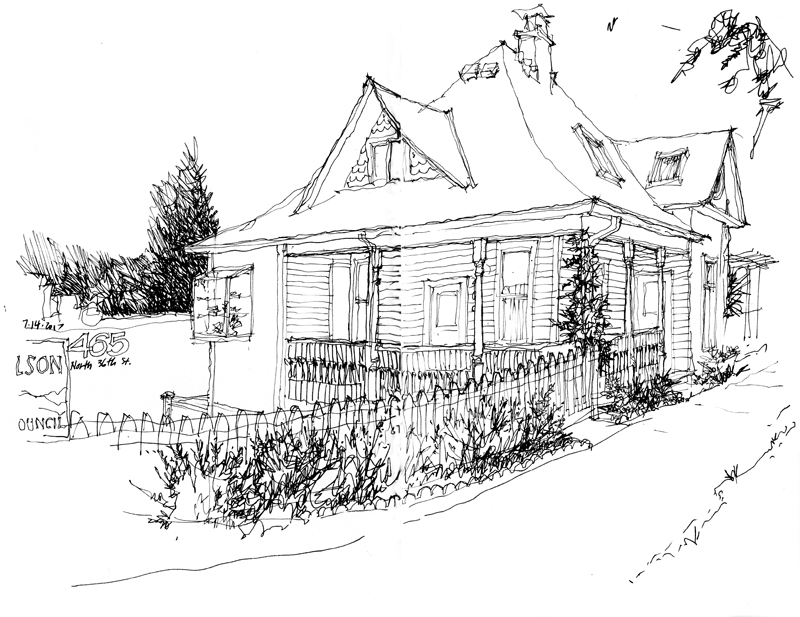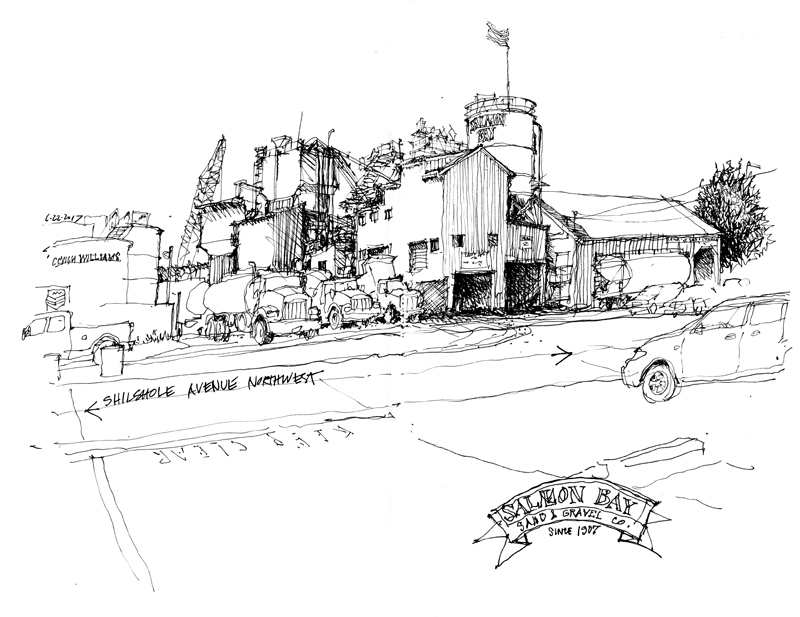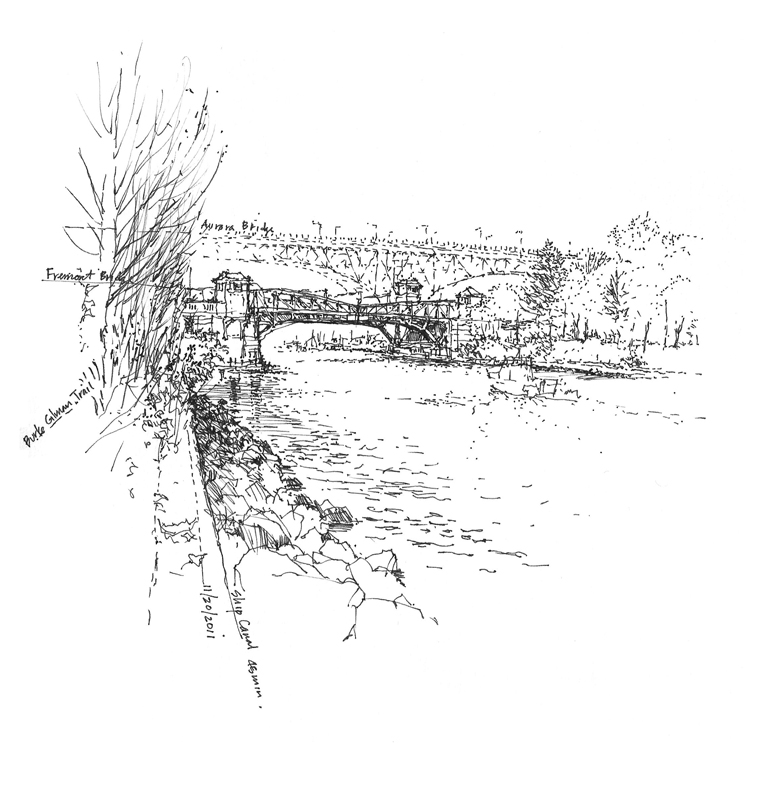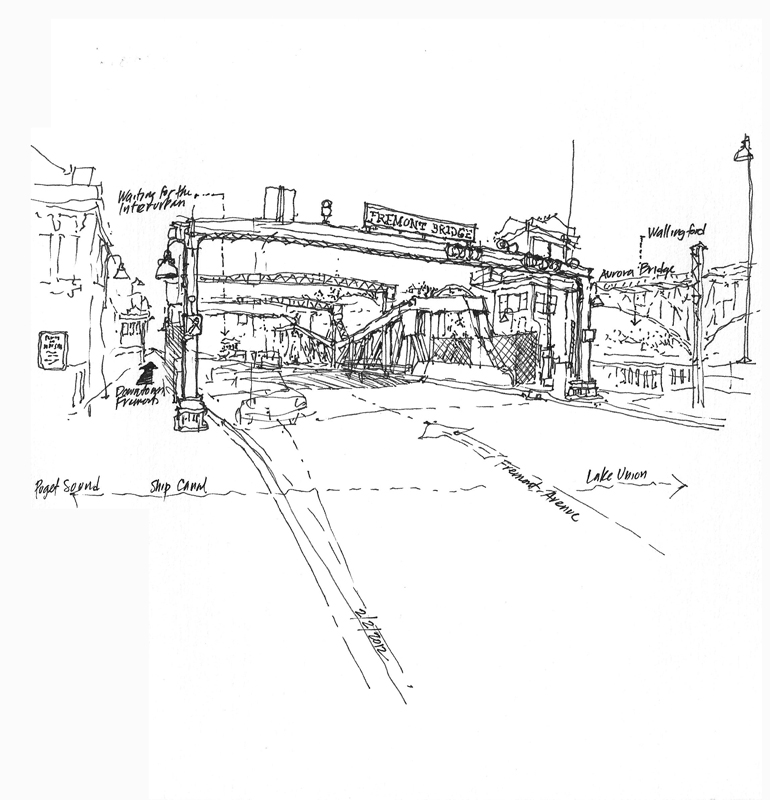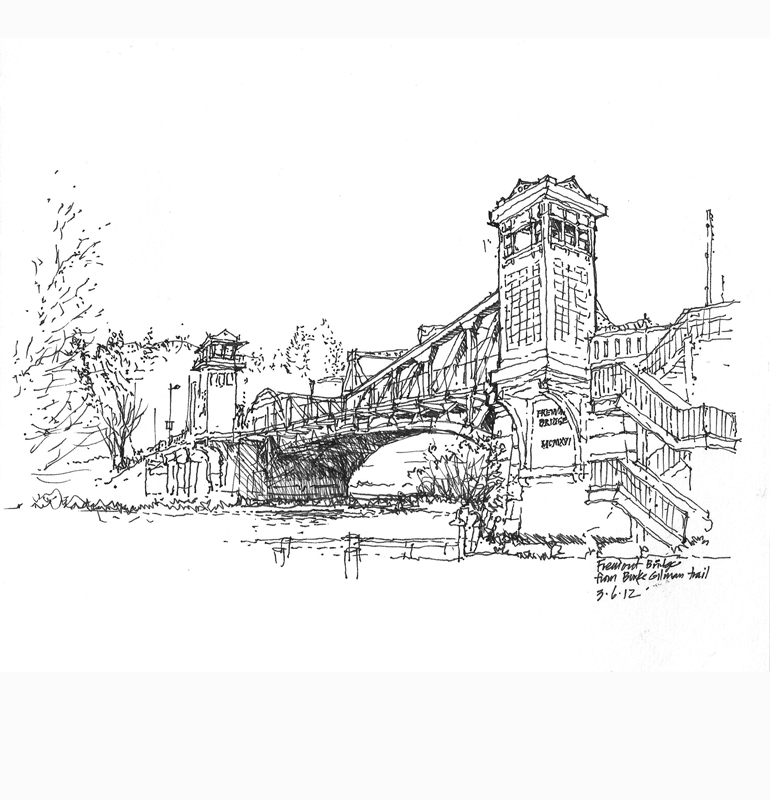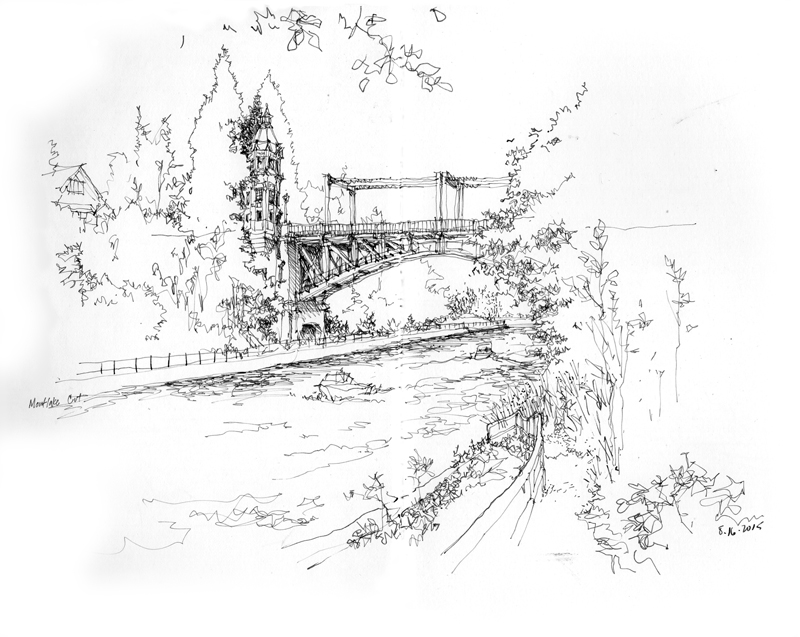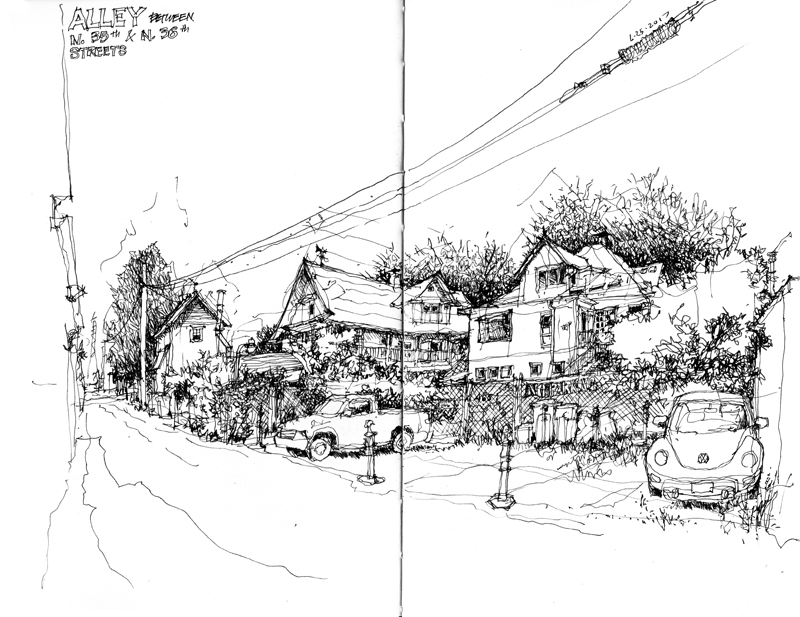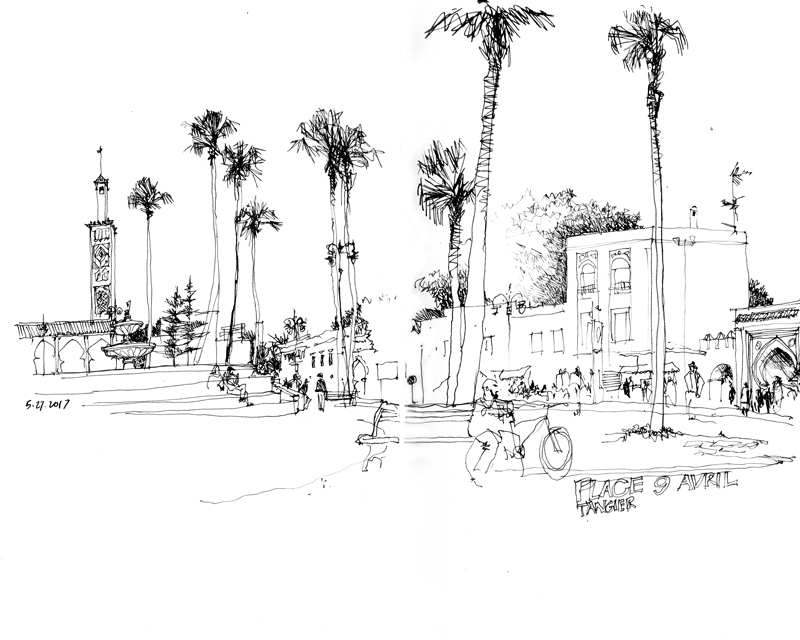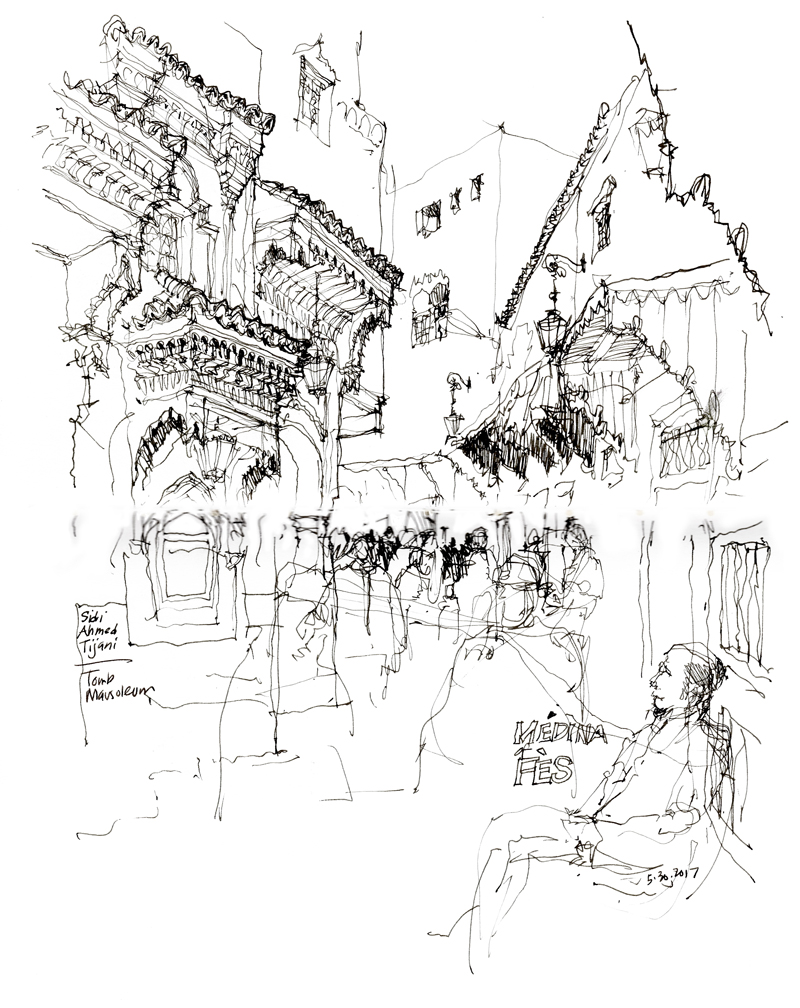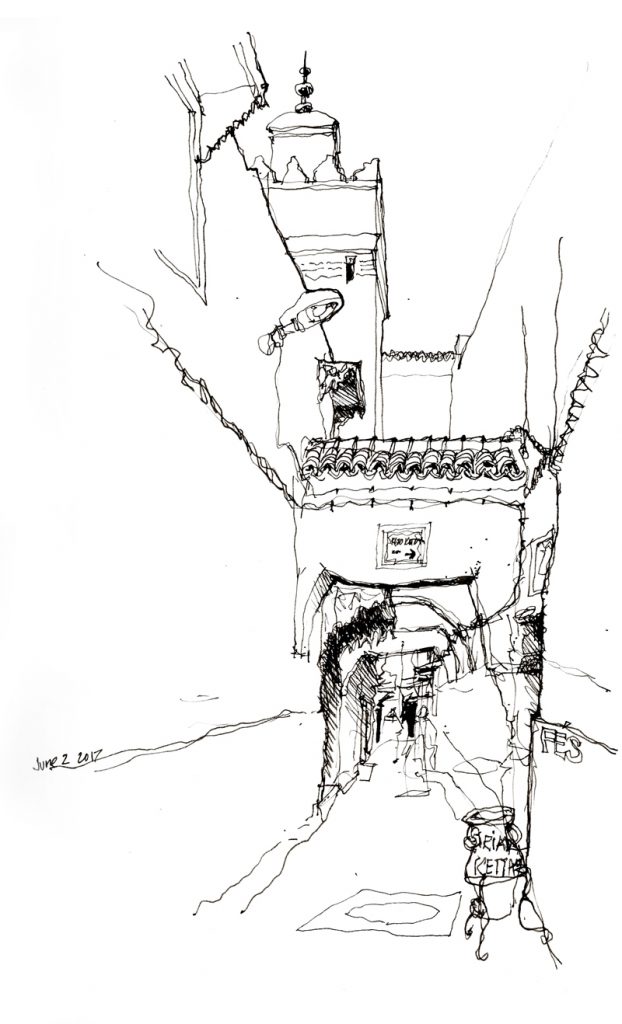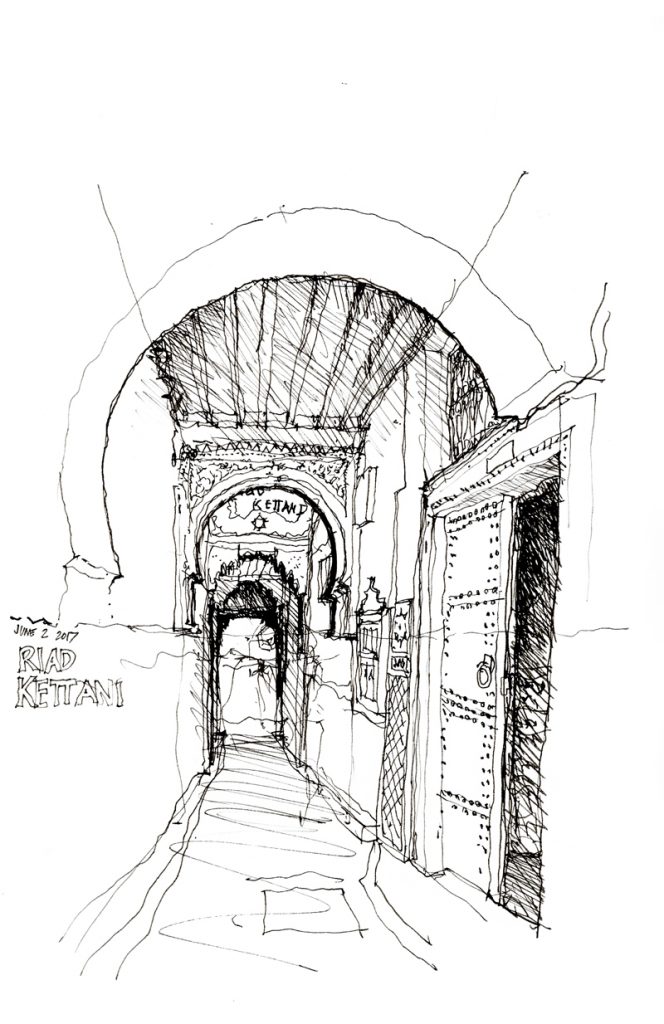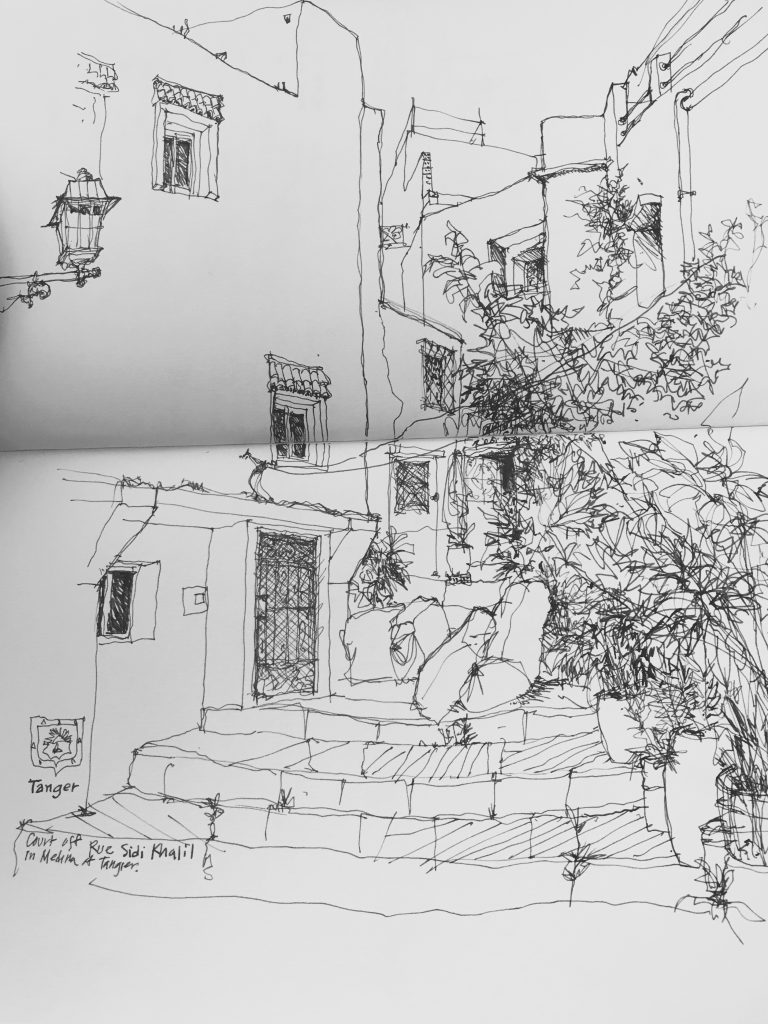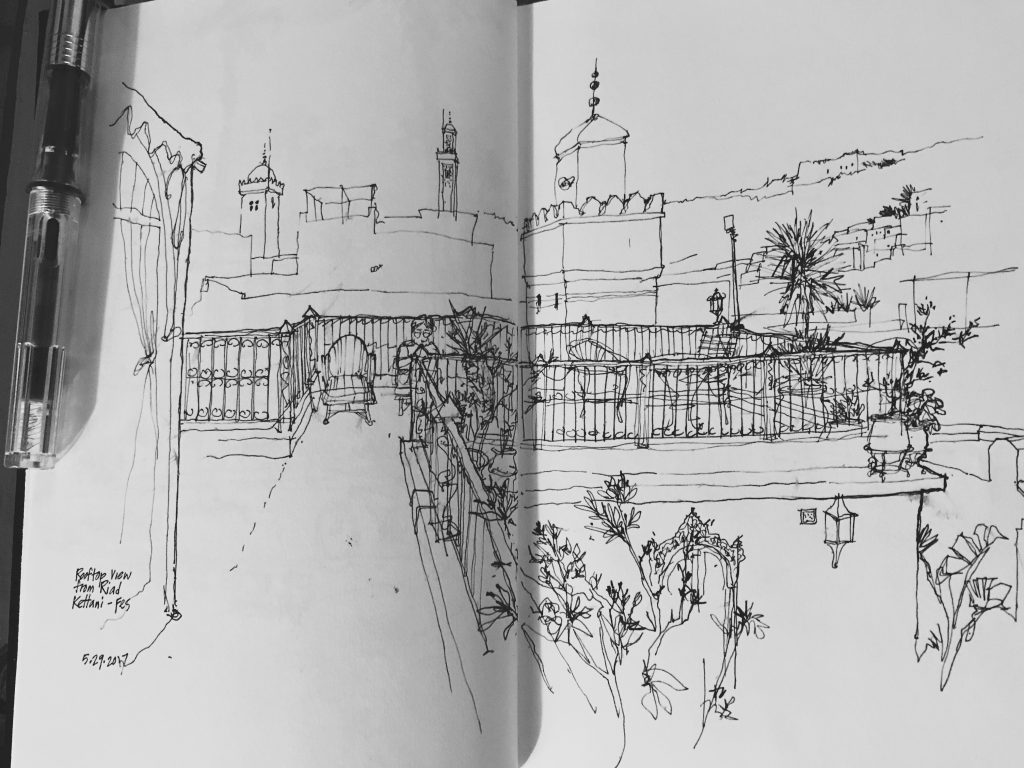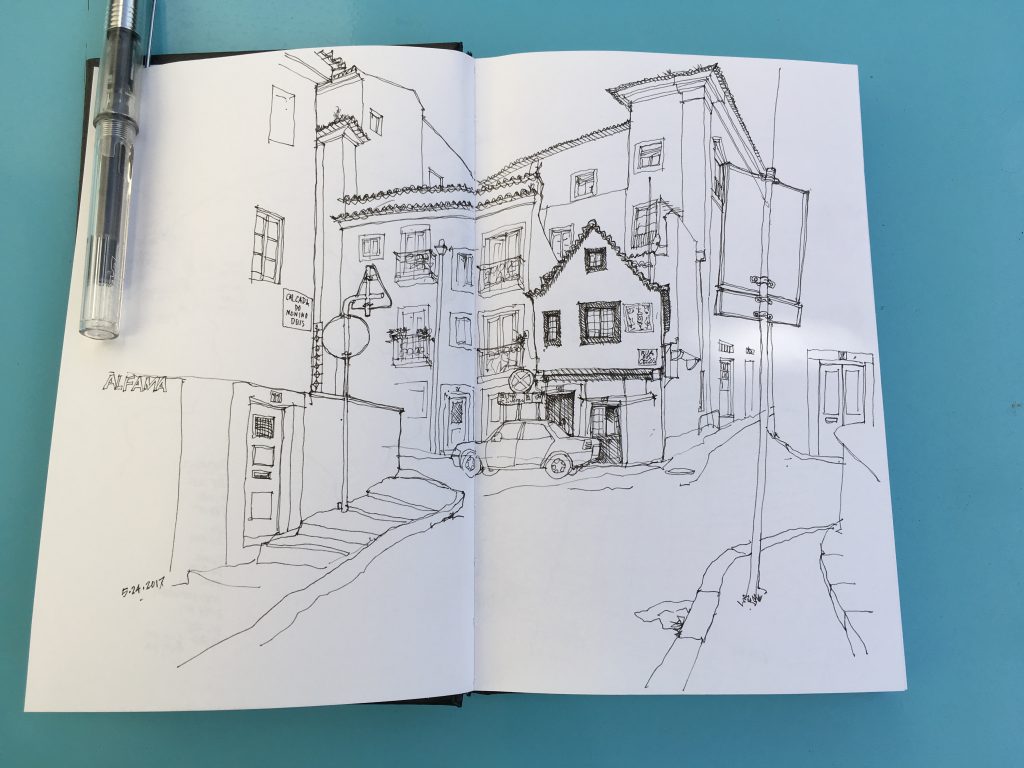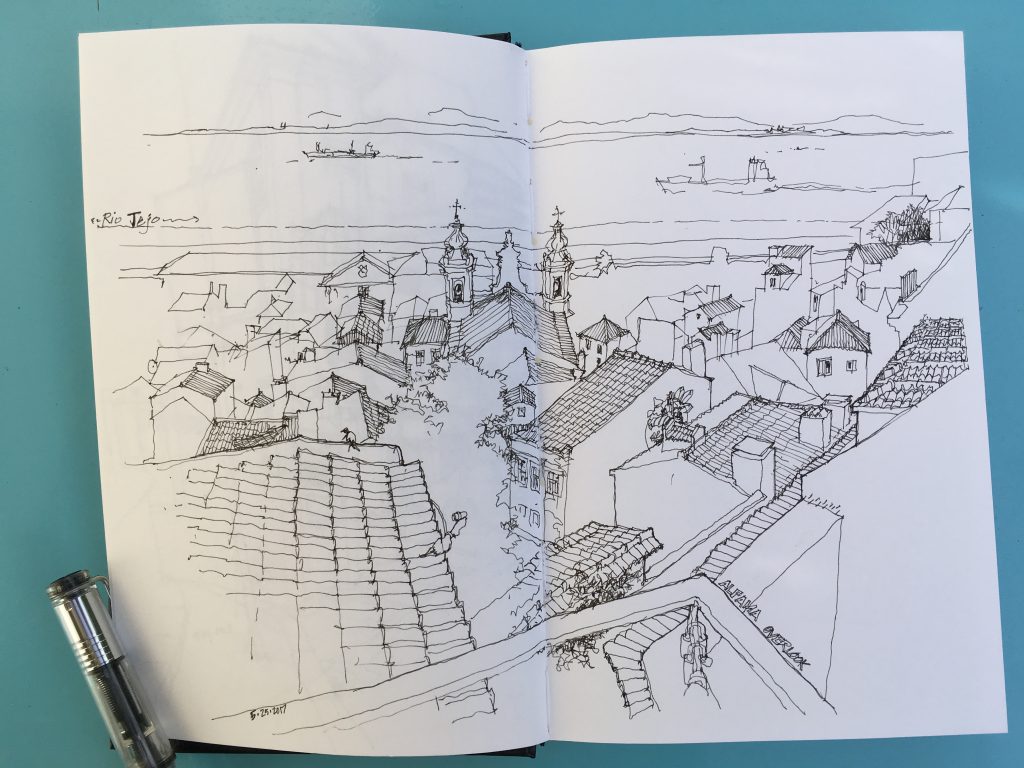Searching for a scene to draw on a beautiful, sunny 75° day, I remembered this house and its side yard, which I’ve walked by numerous times. As so often happens, what I initially envisioned drawing—the side yard space—ended up being edited out, with the focus shifting to the house structure itself, built over a century ago, in 1901, and now housing a women’s clothing and jewelry store.
Category Archives: Urban Sketchers
Salmon Bay Sand & Gravel Company
A familiar sight for anyone driving along Shilshole Avenue Northwest on the way to Golden Gardens Park is this Salmon Bay Sand & Gravel Company complex. The company is a supplier of sand, gravel, and ready-mixed concrete, as well as tools for the concrete, plaster, stucco, and masonry trades.
Samuel Nerdrum founded the company in 1907 on the shores of Salmon Bay, prior to Seattle annexing the then City of Ballard and ten years before the construction of the Ship Canal and the Ballard Locks. One of the company’s first jobs was to offload barges of sand and gravel that entered Salmon Bay at high tide and transfer the material to horse-drawn wagons, which then carried the materials to the Alaska Yukon Exposition site, where the University of Washington campus is now located.
A Centennial Celebration
In remembrance of the centennial anniversary of the official opening of the Fremont Bridge on June 15, 1917, and that of the Lake Washington Ship Canal and Hiram M. Chittenden Locks (aka the Ballard Locks) nineteen days later, on July 4, 1917, I am reposting several drawings of the Fremont and Montlake Bridges that cross the Ship Canal.
For a brief history of the Lake Washington Ship Canal and the Hiram M. Chittenden Locks, please see <http://makingthecut100.org/lwsc-and-the-locks/>. For a history of the Fremont Bridge, see <http://historylink.org/File/20374>.
An Alley View
The Seattle Urban Sketchers group met at the Lenin stature in the Fremont neighborhood this past Sunday morning. Despite the, for Seattle, hot sun and extremely warm temperature, I managed to find a shady spot from which to draw this view along the alley between North 35th and North 36th Streets.
Alleys are interesting places. In addition to serving as conduits for goods and services, they provide more intimate views of the back sides of buildings and other structures, which we mostly see from their more public fronts.
If you look closely, you will notice the stray lines that indicate my several attempts to get the building forms in proper proportion, relative to the width of the view. It’s important to realize that it is extremely difficult to execute a drawing without any of these stray lines unless one draws first in pencil before inking over and erasing the pencil lines. I prefer using only ink and letting the process of building a drawing show through.
Place du Grand 9 Avril 1947
This is a view of Place du Grand 9 Avril 1947, also known as Grand Socco (Big Square), just outside one of the gates to the médina of Tangier. The square is named after the speech Mohmamed V gave in support of Moroccan independence on April 9, 1947. Normally the space is filled with street performers and vendors selling a variety of fruits, spices, and second-hand goods but it was somewhat quiet due to the beginning of the observance of Ramadan—the annual holy month of praying and fasting for Muslims worldwide
Médina Pathways
The Médina of Fès is one of the largest car-free urban zones in the world and through its pathways people and goods flow like the blood coursing through our arteries and veins. Because of their narrowness, it seems awkward to call these pathways “streets” although that is how they function. In addition to serving as paths for people and conduits for goods carried by handcart or donkey, these “streets” serve as informal social spaces and as extensions of small commercial establishments.
There are generally three scales, ranging from main streets as seen in the first image above, to side streets, and finally to back streets as narrow as a meter wide as seen in the images below.
Views of Morocco
Views of Lisboa
More Empty Spaces
Seattle Art Museum
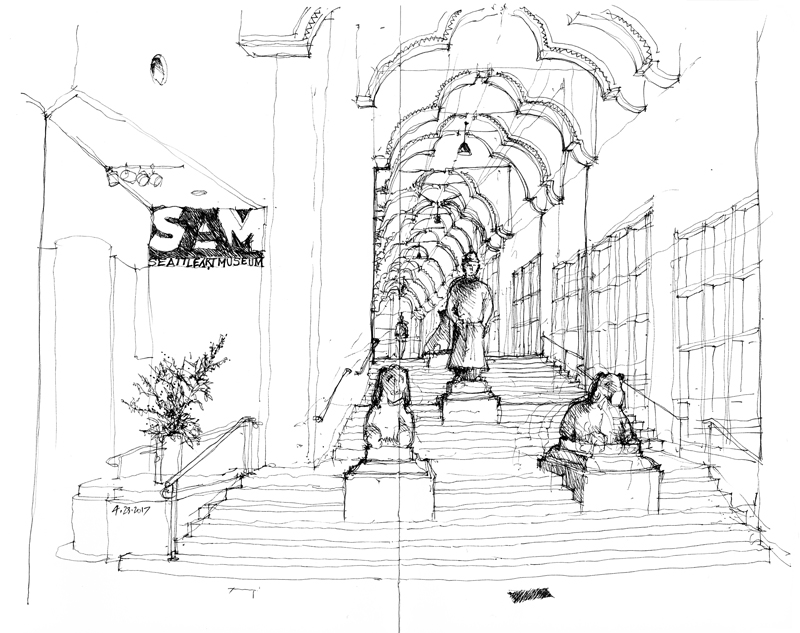 This is the original lobby of the Seattle Art Museum, designed by Venturi, Scott Brown & Associates in 1991, before the museum was expanded in 2006 in a design by Brad Cloepfil of Allied Works Architecture. A grand staircase traverses the rise from First to Second Avenues, mirrored on the outside with a similar set of stairs.
This is the original lobby of the Seattle Art Museum, designed by Venturi, Scott Brown & Associates in 1991, before the museum was expanded in 2006 in a design by Brad Cloepfil of Allied Works Architecture. A grand staircase traverses the rise from First to Second Avenues, mirrored on the outside with a similar set of stairs.
For comparison, below is the same view from 6 years ago, showing how I struggled with the issues of proportion and scale.

